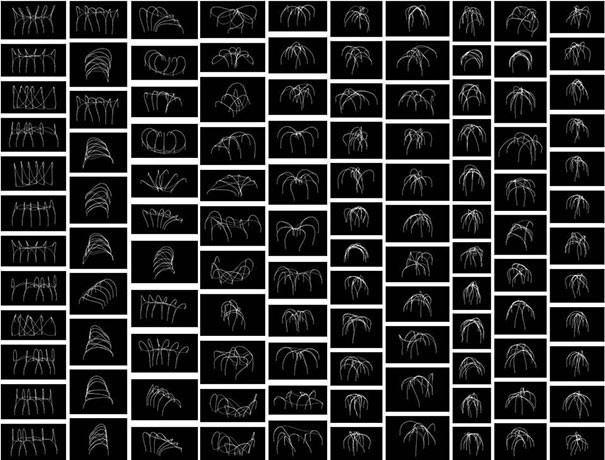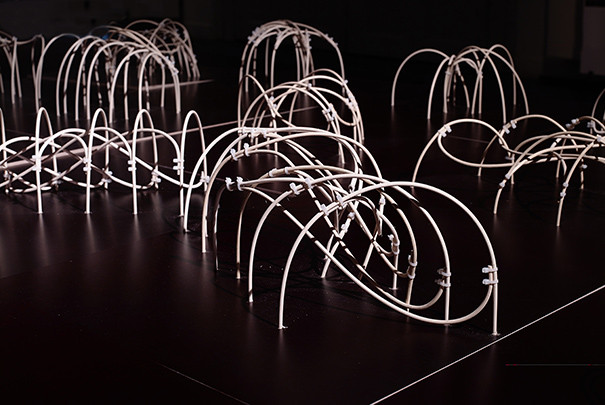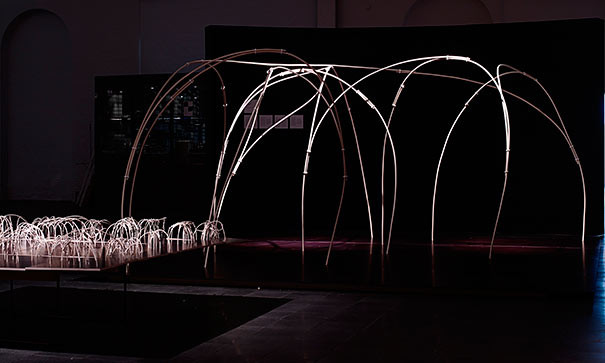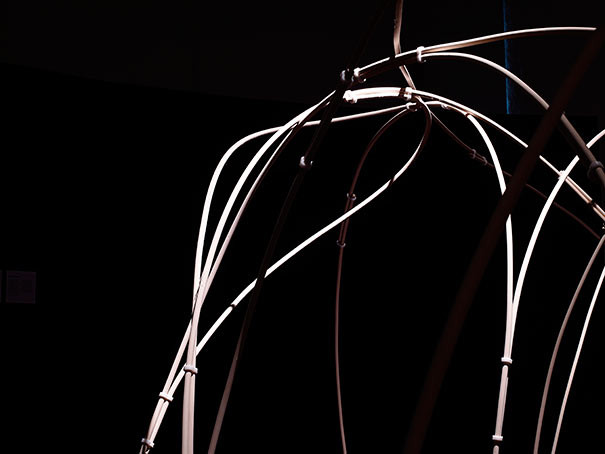
Learning by an Arch

Where parametric modelling allows designers to work in flexible ways with variable geometries, the associated problems of parameterisation and reduction are well known. Parametric models are normally limited because they necessitate a pre-configuration of their embedded variables as well as a pre-determination of model topology, meaning that the designer needs to know all defining parameters and relationships between model elements at the start of the design project.
“Learning to be an Arch” operates as an experiment that tests new methodologies for the modelling of design systems that challenge this standard of configuration fixity by opening parameter spaces in both variable value and element connectivity while simultaneously embedding material behaviour within morphogenesis. The aim for the project is to establish methods for designing with open topologies in which the dependencies between parameters are emergent and open to change during the design process. To this end, multiple learning strategies – including evolutionary and unsupervised classification algorithms – are deployed in the interrogation of a broad design space.
Background
The project takes point of departure in a series of physical models used in the development and examination of a simple system of actively bent arches that become networked together in the formation of novel vaulted configurations. These models are made of rattan, a tropical climbing plant most generally used in wicker furniture and basket-making. Rattan is light, flexible, and effective for rapid explorations of active-bending material systems. Through the exploration of these networks as morphogenetic rule-driven systems for incremental formation, a series of variables available for deployment in a multi-objective evolutionary model are developed. The set of simple goals that emerge from this process of rapid physical prototyping are related to material usage, the generation of variable spatial configurations and structural performance and capacities.

Process
A digital model is then developed based on sets of simple rules for both the generation and the performance-based analysis of each model instance – or phenotype. This modelling process relies on a spring-based simulation system for the instantiation of embedded material behaviours [Kangaroo] and processing through a multi-objective evolutionary algorithm [Octopus] for performance assessment across the established optimisation parameters. The deliberately open-ended design system established allows for a range of phenotypes to emerge and be quickly analysed for performance quality according to the established optimisation goals.
This multi-objective evolutionary approach intentionally produces a high volume of phenotypes, which can become extremely varied and intractably numerous for gaining an understanding of any chief typologies that may emerge from using such a process. Yet it is exactly in this variety that valuable opportunity for design exploration is embedded, and through the classification processes enabled through unsupervised learning, the designer is empowered to gain a richer understanding of the design space.

Experimental approach
The experimental methodology lies in the examination of the design space the processing the resulting taxonomy of evolved model results through learning systems of classification. Because the results of the evolutionary solver have been optimised according to numerically expressed performance measures, it becomes interesting to think of classification such that the existing input variables will not provide immediately obvious means for segmenting or understanding desirable outcomes, and that alternative means of analysis instead become necessary for a more robust understanding of the results. Novel typologies not only emerge through such a process, but more importantly the designer is given new means to both understand and explore the broad design spaces that result from the deliberate application of open-ended design systems.














